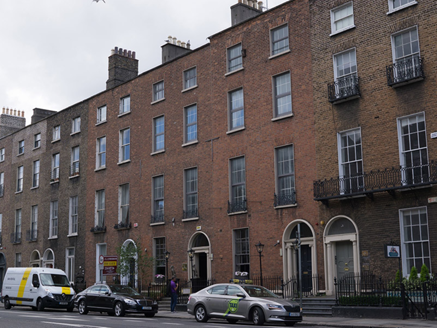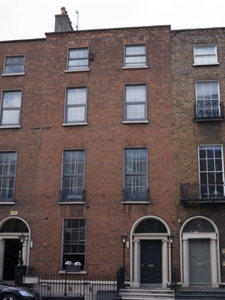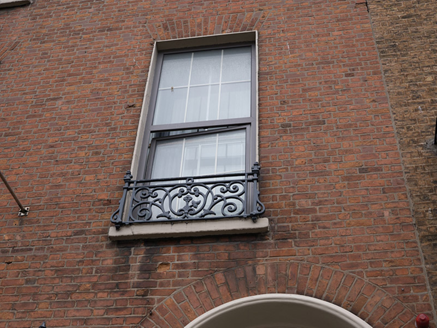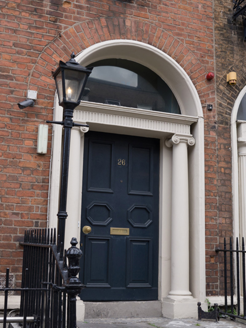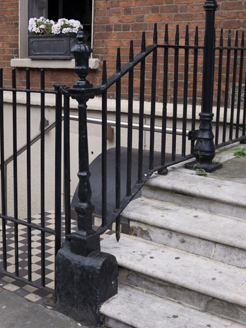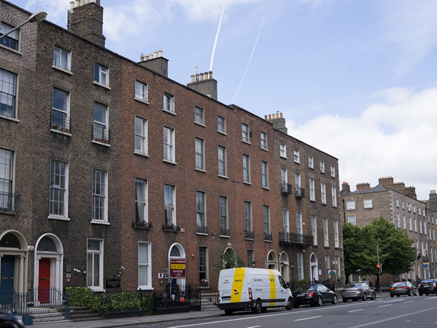Survey Data
Reg No
50110509
Rating
Regional
Categories of Special Interest
Architectural, Artistic
Original Use
House
In Use As
Hotel
Date
1800 - 1820
Coordinates
316282, 232928
Date Recorded
25/06/2017
Date Updated
--/--/--
Description
Terraced two-bay four-storey over basement former house, built c. 1810, having canted two-storey projecting bay to rear (west) elevation. Now in use as hotel and restaurant. M-profile hipped slate roof concealed behind red brick parapet with granite coping. Rendered chimneystacks having clay pots. Red brick, laid in Flemish Bond, to walls to front (east) elevation, with cut granite plinth course and rendered walls to basement and rear. Square-headed window openings having granite sills and raised rendered reveals, mixed replacement and six-over-six pane timber sliding sash windows. Decorative cast-iron balconettes to first floor windows with foliate and Tudor-rose detailing. Round-headed door opening having moulded render surround, doorcase comprising Ionic columns and entablature. Plain fanlight and timber panelled door. Limestone platform with wrought-iron bootscrape, approached by nosed limestone steps having rendered risers. Wrought-iron railings with cast-iron corner posts having urn finials, set on cut granite plinth wall to front, with matching gate.
Appraisal
The classical proportions of this house are characteristic of Georgian domestic architecture in this part of Dublin. The retention of salient features such as the balconettes, sash windows and finely detailed doorcase contribute to the historical character of the composition. Lower Leeson Street was an important routeway in Georgian Dublin, leading to Donnybrook from St. Stephen's Green. The street contains several townhouses built for Lord Dunboyne, the Duke of Ormonde. The buildings lining the street are united by a shared sense of proportion, creating a cohesive streetscape.
